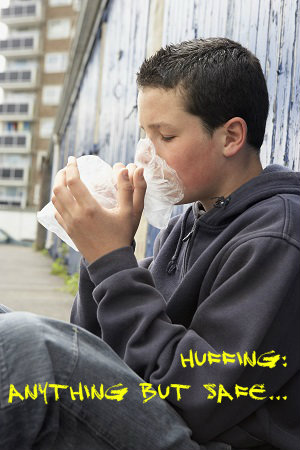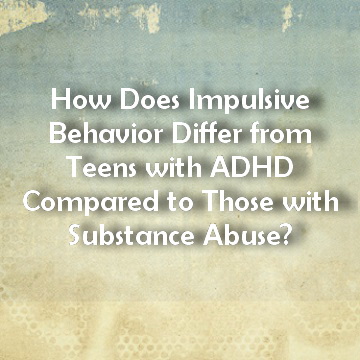10 Sep 2013
Huffing: A Dangerous Trend For Teens
Alcohol, street drugs, prescription drugs and over-the-counter medications are not the only way kids are getting high and it is imperative that parents become aware. Teens are “huffing” all sorts of common household items in order to get a fast buzz.
 Teens and preteens looking for a cheap high are willing to experiment with breathing in powerful household products like nail polish remover, hair spray, aerosol deodorants, computer cleaner, correction fluid and even aerosol from whip cream canisters. These and other toxic substances are found in nearly every room in American homes. The problem is that many parents, like their young teens, fail to recognize the dangers. A single attempt at huffing has been enough to kill some youth.
Teens and preteens looking for a cheap high are willing to experiment with breathing in powerful household products like nail polish remover, hair spray, aerosol deodorants, computer cleaner, correction fluid and even aerosol from whip cream canisters. These and other toxic substances are found in nearly every room in American homes. The problem is that many parents, like their young teens, fail to recognize the dangers. A single attempt at huffing has been enough to kill some youth.
Huffing is also called dusting or sniffing. Kids trap the toxic chemicals in a small plastic bag which they then hold up to their face before inhaling deeply. This gives them a five to 10 second rush or high. Teens inhale magic markers, household paint, Freon from air-conditioners and refill cartridges for butane lighters.
Dangerously False “Safer” Perception
In recent years there has been a trend among teens away from illegal street drugs towards substances that teens consider more ‘safe.’ Prescription and over-the-counter medications became more widely used for a time until cost and safety measures made them hard to come by. Now inhalants are popular. Not only do these products seem harmless to teens, they are also inexpensive and easy to obtain. Most of the time teens can simply help themselves to something already on the shelf at home. If not, no one will question them when they buy these things at the store.
The truth is that these products are safe when used for their intended purposes and according to their package directions. They are anything but safe when inhaled in order to get high. At best, repeated exposure will injure vital organs (kidneys, liver, lungs, heart and brain). At worst, kids can experience heart attack – referred to as Sudden Sniffing Death Syndrome – or suffocation. Parents who had no idea their child was huffing have gone into their child’s room to find them dead on the floor with a bottle of computer cleaner still clenched in their fingers.
Parents should talk with their teens and even preteens about the dangers of breathing in toxic fumes and chemicals. Kids are huffing even in elementary school, so it isn’t a discussion that needs to wait for high school – it can happen while using these household items or it can be part of a sit-down conversation about drug use in general. Tell your kids that while a product can be safe to use it can still be poisonous. Poison is an important adjective since it communicates just how serious these substances really are.
Parents Can Also Keep Their Eyes Open To Signs Of Huffing, Including:
- Finding plastic bags with a chemical odor to them
- Aerosol products or strong chemical items disappearing entirely or running out quickly
- Teens having the smell of chemicals on their breath
- Symptoms of intoxication, such as red and watery eyes, slurred speech or dazed appearances
- Paint, correction fluid or magic marker stains on their face
- Household products being out of place or perhaps even in the teen’s room.
The best defense is a strong offense, so talk with kids about what their friends might be doing. Talk about why kids might be looking to get high. If your child is huffing regularly, get professional help. Huffing can be addictive in the same way as drugs or alcohol, and kids won’t know which sniff could be their last.
02 Sep 2013
Taking Drugs to Boost Grades
For some, college was a time for sleeping in and goofing off. For others, memories of college are associated with stress as students worked to achieve good grades while juggling intense academic requirements, extracurricular activities and relationships with a new level of personal responsibility.
The stakes are high. Students understand that their grades will help them secure a good job with financial security. Competition can be fierce to not only be accepted into but also remain in specialty colleges within the university that teach skills to teachers, therapists, accountants and engineers.
 “Smart Drugs” Not so Smart
“Smart Drugs” Not so Smart
Recently, ABC affiliate 13WHAM of Rochester, New York, highlighted one way that students choose to handle the pressure – misusing prescription stimulants to increase focus and eliminate the need for sleep, known as “smart drugs.”
Adderall is just one brand name drug that students abuse as a study aid. Prescribed to treat attention deficit hyperactivity disorder (ADHD), the drug is so widely issued by doctors that students find it relatively easy to obtain as friends may be willing to sell their extra pills.
A study published in The Addiction Journal indicated that the problem is becoming widespread. One in four college students indicate they have used pills to get through an exam or other stressful academic situation.
The 13WHAM story profiles an individual under the pseudonym of Steve who regularly uses stimulants to meet academic requirements. He said the medication increases focus and avoid sleeping, allowing for a 72-hour straight study session he did when taking 60 milligrams of Adderall, which paid off with good grades.
Adderall Abuse & Risks
Adderall abuse is becoming more common and the effects of the drug can lead to increased medical interventions and the need for emergency care.
Students are unaware of or underestimate the risks associated with the misuse of prescription drugs. They may believe that prescription drugs are somehow safer than street drugs or that there isn’t a risk of mixing drugs with other medications. Experts, on the other hand, warn that the drugs can be extremely dangerous, with adverse reactions including stroke, heart attack and psychotic episodes.
13WHAM reported that university health center doctors were seeing increased attempts by students to get prescriptions for stimulants as finals approached. The physicians said that while they are generally able to help students who have a diagnosis for ADHD, it takes more than one exam session to determine whether a student is abusing stimulants.
What Parents Can Do
Parents should take time to talk to their college-age children about the risks of using stimulants. They can also speak openly about their opinions and rules related to substance use. While students enjoy an increased level of freedom at college, many are still receptive to their parents’ viewpoint while they are receiving support, both financial and otherwise.
While parents may doubt their influence, particularly after their teen has left home to pursue a degree, studies show that parents play an important role. Teens who abstain from substance use repeatedly indicate that their parents were influential in helping them decide not to use substances.
Parents can also be a source of support for their college-age child as they face the intense pressure and competition to succeed in school. Keeping an open conversation about the challenges and expectations involved with getting a degree may help a student avoid making poor decisions related to stress management.
When it comes to teen alcohol and drug use, it seems like there’s always a new method that young people are finding to get high – chugging cough medicine, sniffing glue, snorting bath salts or mixing old medications found in the family medicine cabinet. While it’s normal to be curious, one poor decision can change a person’s life forever.
That’s why authorities and health officials are concerned about a dangerous new trend: smoking alcohol. Because the lungs have such a large surface area, alcohol is absorbed at a much quicker rate when it is inhaled using vaporizers, i.e.: dry ice and bicycle pumps connected to old plastic bottles.
Breathalyzer Comparison
According to Dwayne Baird, spokesperson for the Utah Department of Public Safety, one reason individuals may choose to inhale alcohol is because they believe it won’t show up on a breathalyzer. But Baird says that anyone who understands how the test works knows that a breathalyzer assesses the blood alcohol content and inhaling alcohol actually leads to a higher concentration.
Another reason that people choose to smoke alcohol instead of drink it is that inhaling directly into the lungs delivers a quicker, more intense high. Under normal circumstances, alcohol would be consumed then pass through the body’s stomach and liver where it takes time to metabolize. Dr. Barbara Crouch, Executive Director for Utah Poison Control, equates the practice to binge drinking – when too much alcohol is consumed too quickly, the body has a difficult time successfully processing all of it.
Baird says that the Department of Public Safety still runs across more cases of normal alcohol consumption than it does inhalation methods, but with information able to spread rapidly through social media sites, its popularity with teens could spike quickly.
Scary Results
The body has normal ways of signaling that it has had too much alcohol. When someone drinks to excess, the body responds by causing a person to vomit. That doesn’t happen when alcohol is inhaled. Instead, it passes straight through the lungs into the bloodstream and up to the brain. The problem with that, says Baird, is that it’s difficult for a person to tell when they’ve reached their limit.
Young people in particular tend to regard themselves as invincible and often don’t consider the consequences of their actions or how such consequences might impact their future. But inadvertent alcohol poisoning is a real and even bigger threat when inhaling than drinking alcohol.
Drug addiction can affect a wide array of people, but it’s mostly the celebrities who are struggling with substance abuse that we hear about, such as Amy Winehouse and Corey Haim. What are the reasons for all this drug abuse in Hollywood?
First you begin with the basic understanding that addiction is a serious issue, one that doesn’t discriminate and can affect anyone. Toss in celebrity-status, wealth, along with high expectations, and you see how drug abuse can take hold: the euphoric high provides temporary relief; a connection is made in one’s mind; and that connection becomes a crutch whenever moments of extreme stress or depression come up.
Inner Drive to Get Well
Celebrities and drug addiction go hand in hand so often that the stigma appears to be fading, and since there seemingly aren’t penalties for using drugs in their professional lives there’s less motivation to get treatment. For all addicts, an intense passion and drive to get well is needed to build back the sober life they were once living.
This is all a backdrop for a teenager today struggling with substance abuse. Celebrities are constantly in the spotlight, their images and details of their lives flashed everywhere, saturating a teen’s mind, with the lifestyles of these celebrities having a huge impact. If a teen going down the path of addiction idolizes someone who is out partying with nothing to lose, they might not think about the consequences that can come from a life of drug addiction.
Teen’s Similarities to Celebrities
It’s not often that the other side of the story is reported to teens. Celebrities are people too and might have some of the very same insecurities, desires and needs as their teenage fans. Everyone has a lot to lose if they go down the road of substance abuse, and it’s a hard path to come back from.
Along the lines of Dr. Drew Pinsky’s writings, celebrities appear to be genetically wired to be vulnerable to addiction because of their drive to be successful entertainers. Perhaps this is why they seek the high that comes with being in the spotlight, and then seek the artificial high that comes from drugs. It’s important to be aware of what your teen is experiencing and perhaps discover the root of their desire to get involved in these various, dangerous activities.
Britain’s Daily Mail recently ran an article from the mother of a 12-year-old who told how her daughter’s friends are experimenting with marijuana and being expelled from school. Once confined to older teens and young adults, smoking marijuana is now more common among teens and pre-teens.

From states in the U.S. deciding to legalize marijuana to movie stars and rock stars being photographed using it, the message sounding loud and clear to youngsters is that smoking marijuana has no repercussions. The Daily Mail article recounted the stories of several pre-teens who had been either expelled from their private schools or who were using the drug off-campus to avoid expulsion. The obvious point was that young children were getting their hands on marijuana and seemed to have no worries about the consequences.
The British newspaper article did not hesitate to point fingers at singers like Lil Wayne and the late Amy Winehouse among others – stars who make no bones about using marijuana. Public icons, especially music icons, are influential for young teens and pre-teens. Their cavalier attitude and, in some cases, promotion of marijuana use, has more impact than many parents might like.
At Risk
The article also reported on studies in the Commonwealth that have found that when a teen uses marijuana s/he becomes more at risk than alcoholics for developing mental illness. Teens who use pot also tend to have more problems with relationships and have a tougher time finding steady employment. These facts are lost on the pre-teen and early teenager who only knows that they want to be like the superstars they see on TV and splashed across online tabloids.
In Great Britain, one out of every eight arrests for dealing marijuana involves a child. Kids are smoking it. Kids are selling it. Kids don’t think marijuana is anything to stay away from. The facts, of course, are far different but evidently we aren’t getting the message through. There is too much confusion between what is being portrayed and what is being said.
The truth is that early marijuana use can increase the likelihood of later addictions. Teens who use marijuana run a greater risk of depression. One out of every 10 marijuana users will experience severe effects such as anxiety, paranoia and hallucinations. No one can say who will be in the 10 percent.
One of the researchers in Australia who investigated the outcomes for teens who decide to smoke marijuana said use of cannabis can negatively affect teens for years.
22 Aug 2013
How Does Impulsive Behavior Differ from Teens with ADHD Compared to Those with Substance Abuse?
Impulsive behavior, known more formally as impulsivity, is behavior that occurs spontaneously or with only minimal forethought or preparation. For a number of reasons, teenagers generally act impulsively more frequently than adults. Impulsivity in teens with attention-deficit hyperactivity disorder (ADHD) has been linked to increased risks for involvement in alcohol, drug and cigarette use. However, according to the results of a study published in 2012 in the journal Nature Neuroscience, the roots of the impulsive behavior found in teens with ADHD differ significantly from the roots of the impulsive behavior associated with teen substance use.
Teen Impulsivity Basics
The human brain relies on a specific region, called the frontal cortex, to perform and regulate such higher-level tasks as making judgments or decisions, gaining perspective on self-motivation and controlling fleeting or momentary urges. However, during adolescence, the frontal cortex is not completely formed. This lack of brain development goes a long way toward explaining why teenagers tend to act impulsively, even when they receive information from adults that’s designed to offset impulsivity. The authors of another study, published in 2009 in the American Psychological Association’s American Psychologist, concluded that teens age 16 and older actually have enough brain development to reason in a manner similar to adults. However, teens in this age group still generally lack the emotional maturity to adequately or consistently control their impulsive behaviors.
the frontal cortex is not completely formed. This lack of brain development goes a long way toward explaining why teenagers tend to act impulsively, even when they receive information from adults that’s designed to offset impulsivity. The authors of another study, published in 2009 in the American Psychological Association’s American Psychologist, concluded that teens age 16 and older actually have enough brain development to reason in a manner similar to adults. However, teens in this age group still generally lack the emotional maturity to adequately or consistently control their impulsive behaviors.
Impulsivity and ADHD
Along with hyperactivity, impulsivity forms one of the two basic symptoms of ADHD. Impulsive urges in a teenager (or younger child or adult) affected by the disorder may manifest as a generally high level of impatience, a tendency to frequently interrupt others, an inability to wait patiently in different situations, a general lack of emotional restraint, a tendency to disregard unpleasant outcomes of one’s actions, or an inability to tailor one’s words appropriately for a given social situation. Some teens with ADHD have prominent symptoms of impulsivity and hyperactivity, while others have little or no problems with hyperactivity/impulsivity and instead have significant problems maintaining focus or attention.
Connections to Substance Use
In the past, researchers have clearly linked the presence of ADHD to increased risks for substance use in teenage populations. In the study, published in Nature Neuroscience, a multinational research team explored this link by periodically examining the brain function of 1,896 adolescents. These teens were all age 14 when the study began, and underwent brain scans at two-year intervals over the next four years. During these scans, all participants were asked to perform tasks that measured their level of self-control. The researchers also used medical histories to determine how many of the study’s participants had symptoms of ADHD. In addition, they periodically asked the participants about their level of involvement with alcohol, drug and cigarette use.
After reviewing their findings, the authors of the study concluded that the presence of ADHD itself does not reduce teenagers’ ability to control their impulsive urges. Similarly, they concluded that teens who use substances also don’t generally have a reduced ability to control their impulses. This does not mean that teens who have ADHD or use substances don’t act impulsively; it simply means that teens with these issues apparently don’t typically act impulsively any more often than teens unaffected by these issues. Critically, the authors of the study also concluded that when teens with ADHD do act impulsively, their behaviors are triggered by different brain pathways than the pathways that trigger impulsive participation in substance use. This finding suggests that the presence of ADHD-related impulsivity is not as likely to contribute to substance use risks as scientists once commonly believed.
Considerations
Interestingly, the authors of the study in Nature Neuroscience also concluded that the brain pathways that contribute to impulsivity-related substance use kick into gear even when some teenagers use only minimal amounts of a given substance. This finding strongly suggests that substance use itself does not lead to increased impulsivity in adolescents. Instead, the reverse is likely true, with the preexisting effects of impulsivity contributing to increased participation in substance use. In real-world terms, this means that some teenagers may have longstanding or built-in impulsive tendencies that make them much more susceptible to substance use (and subsequent problems with substance abuse or addiction) than other teenagers who come from similar backgrounds, belong to similar peer groups and participate in similar sorts of daily activities.
“The take-home message is that impulsivity can be decomposed, broken down into different brain regions,” says Hugh Garavan, one of the study authors. “The functioning of one region is related to ADHD symptoms, while the functioning of other regions is related to drug use.”
Gangs are known for the physical and social threats they pose to rival gang members and their general communities. However, gang membership itself apparently poses a significant threat to mental health. According to the results of a study reported in 2013 by researchers from Queen Mary, University of London, gang members have substantially increased risks for developing harmful psychological symptoms or a diagnosable mental illness when compared to the at-large population.
Gang Membership Basics
Teenagers and people in the early stages of adulthood form the majority of gang members in the U.S., the American Academy of Child & Adolescent Psychiatry reports. However, increasingly, preteens and younger children also become involved in gang activity. While public perception commonly links the presence of gangs to large urban areas, these organized units also appear in smaller urban areas, isolated towns and rural regions. Known consequences of gang participation include increased chances of committing violence or being a target of violence, as well as heightened chances of substance abuse/addiction or incarceration, heightened chances of involvement in risky sexual activity and lowered chances of developing useful work skills or receiving useful academic training.
The presence of certain mental health problems—including attention-deficit hyperactivity disorder (ADHD) and a conduct-related condition called oppositional defiant disorder—can increase a person’s chances of getting involved with a gang. Other known risk factors for joining a gang include living in an area populated by gangs, lack of appropriate adult supervision, exposure to music or other cultural influences that applaud gang participation, lack of work or educational opportunities, a violent home environment and a home environment or family background that includes gang members. A lack of self-esteem or role models also increases gang participation risks. Many individuals cite their gang affiliation as a “home” or stabilizing influence in their lives.
Mental Health Risks
In the study reported by Queen Mary, University of London, a team of British researchers examined the connections between gang involvement, violence and mental illness in a group of over 4,600 men between the ages of 18 and 34. Roughly 2 percent of these men identified themselves as current gang members, while slightly more than 27 percent identified themselves as recent perpetrators of physical assault or some other form of violent activity. The remaining 70.4 percent of the participants described themselves as being non-violent in the five-year period prior to the start of the study.
After reviewing their findings, the authors of the study concluded that both gang members and violent men not affiliated with gangs have significantly increased risks for developing a range of specific mental disorders or symptoms common to several different mental disorders. In the case of gang members, especially prominent illnesses include alcohol or drug addiction, antisocial personality disorder or some other personality disorder, and various types of anxiety disorder. Prominent symptoms common to a number of mental illnesses include hallucinations and/or delusions (also known as psychosis) and suicidal behaviors that culminate in a suicide attempt.
Significance and Considerations
The authors of the Queen Mary, University of London, study believe that they are the first researchers to assess gang members for mental health problems other than substance use disorders. They attributed the increased risks for anxiety disorders and psychosis in gang members to violence-oriented thinking, exposure to violence at the hands of others and fears about future violence exposure. In many cases, these problems manifest in the form of post-traumatic stress disorder (PTSD), a condition once viewed as an anxiety disorder in the U.S., but now classified along with several other illnesses as a trauma- and stressor-related disorder. The authors of the study attributed the rate of suicidal behavior and suicide attempts in gang members to both the psychological strain of mental illness and the impulsive nature of violent behavior, which can turn inward in some individuals.
Generally speaking, gang members and non-gang members who engage in violence are younger than non-violent men and also have a higher rate of unemployment. In the U.K., which has a socialized medical system, gang members also seek access to mental health services more often than non-violent men. The authors of the study note that the men in the participating age range are typically gang “lifers;” they don’t know if the same problems with mental illness appear in short-term or younger gang members.
The war on drugs is failing, according to the Government Accountability Office (GAO). In 2009, more people died as a result of drug use than from all traffic accidents combined. And despite the fact that over $1 trillion has been spent since 1971 trying to deter people from illegal substance use, not much has changed.





